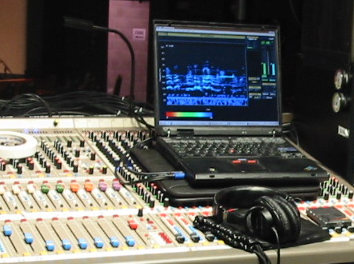Here’s my brute force method for equalizing lavalier microphones in difficult situations. My clients are free to walk in front of the P.A. after this treatment. It works!
On Yamaha CL/QL mixers, I set up a subgroup (mix) for all the lavalier mics, and I insert two 8-channel parametric units from the rack. The mix itself comes with 4 EQ filters, so now I have 20 parametric filters to play with, plus the notch filters on page 2 of the rack EQs. I make lots of little surgical cuts to achieve the best sound.

I identify feedback frequencies using a spectrum analyzer set for very fine resolution; at least 1/24th octave. My main tool is an old version of Smaart (because it’s paid for and it works.) During the show, I listen for room resonances and I softly hum, sing or whistle the offending frequency into the spectrum analyzer and then mouse over the screen to display a specific number in Hertz. I center a new parametric filter on that number and reduce the gain by a few decibels. The filter should be wide enough to catch the unwanted energy but narrow enough to prevent cutting out good sound. My filters are usually between a 6th and a 12th of an octave wide—one or two musical notes. If the temperature of the air changes drastically, your filters will need to be adjusted upward in frequency if it gets colder, or downward if it gets warmer. A wider filter might be chosen to accommodate temperature change.
On other mixers that don’t have so many insertable filters, I send the lavalier mix out of the board and back in to an unused input, and feed that to a second lavalier mix which then feeds the loudspeaker matrix. This method is risky if you hit the wrong button, because you can get into electronic feedback oscillation and send extremely loud signal out of your mixer. But if you keep a lid on the danger, it more than doubles the number of EQ filters for your lavaliers.

